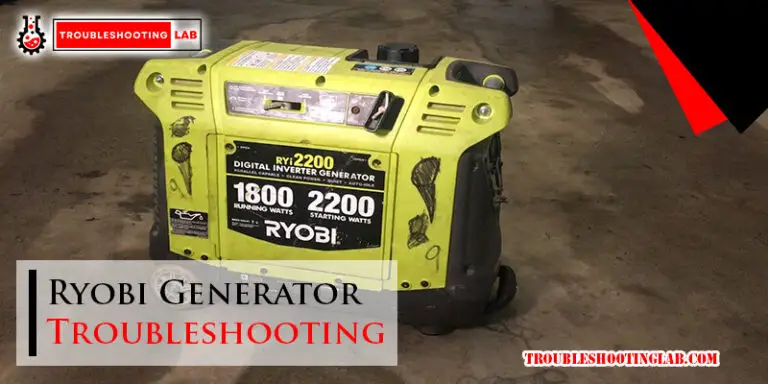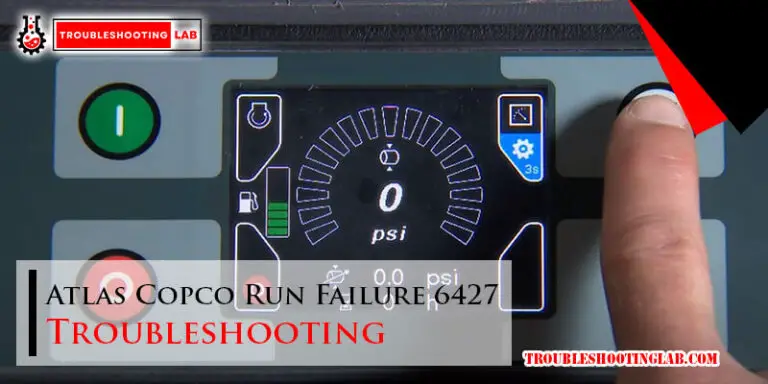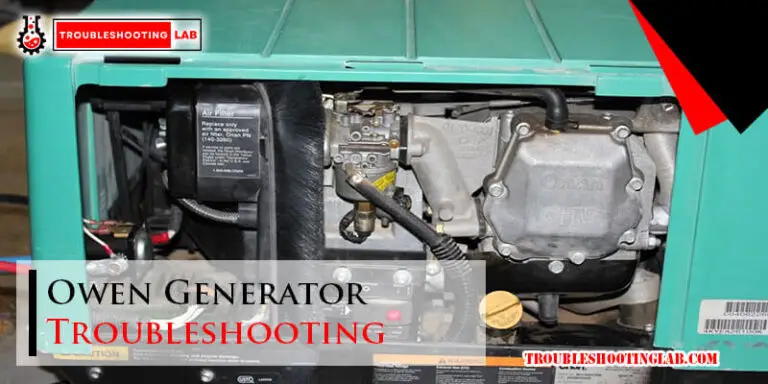Vfd Troubleshooting Flowchart: Simplify Fault Diagnosis
When your Variable Frequency Drive (VFD) acts up, it can feel like everything grinds to a halt. Whether you’re dealing with sudden shutdowns, error codes you don’t understand, or strange motor behavior, troubleshooting can quickly become overwhelming.
But here’s the good news—you’re not alone, and you don’t need to waste hours guessing what’s wrong. A well-structured VFD troubleshooting flowchart can guide you step-by-step to pinpoint the issue and get things running smoothly again. In this post, you’ll discover a clear and practical flowchart designed to save you time, reduce stress, and eliminate the trial-and-error approach.
If you’ve ever wished for a simple, effective way to troubleshoot your VFD without unnecessary frustration, keep reading—you won’t want to miss this.

Credit: support.machmotion.com
What Is A Vfd?
Have you ever wondered how machines control their speed so precisely? The answer often lies in a VFD, or Variable Frequency Drive. It’s a device that helps regulate the speed and torque of an electric motor by adjusting the frequency and voltage of the power it receives.
VFDs are everywhere—factories, HVAC systems, conveyor belts, and even elevators. They not only improve efficiency but also help save energy by running motors at the exact speed needed for a task. Understanding how they work is crucial if you’re troubleshooting or optimizing a system that uses one.
What Does A Vfd Do?
Think of a VFD as the brain of a motor system. It takes in electrical power at a constant frequency and modifies it based on the motor’s needs. This allows the motor to operate at different speeds without compromising performance.
For example, in a manufacturing plant, you might need a conveyor belt to run slower for delicate items and faster for heavier goods. A VFD makes this possible by controlling the motor’s speed with pinpoint accuracy.
How Does A Vfd Work?
A VFD works by converting AC power into DC power and then back into AC, but at a variable frequency. This variable frequency is what allows the motor to operate at different speeds. It’s like having a dimmer switch for your motor instead of just an on/off button.
Inside a VFD, you’ll find components like rectifiers, inverters, and DC buses. These work together to control the power supply to the motor. If you’re troubleshooting, understanding these components can help you pinpoint issues faster.
Why Is A Vfd Important?
Imagine running your car at full speed all the time—even when you’re parking. That’s what happens when motors run without speed control. A VFD solves this by letting you match the motor’s speed to the task at hand.
This not only saves energy but also extends the life of the motor. Plus, it reduces wear and tear on mechanical systems connected to the motor. If you’re looking to cut costs and improve reliability, a VFD is a smart investment.
Where Can You Use A Vfd?
You can use a VFD in virtually any system that runs on an electric motor. Popular applications include pumps, fans, compressors, and conveyor belts. They’re also used in HVAC systems to control airflow and maintain consistent temperatures.
In my experience, installing a VFD on a water pump drastically reduced energy consumption. Not only did it lower electricity bills, but it also improved the pump’s responsiveness to demand changes. Could a VFD make a difference in your setup?
Understanding what a VFD is and how it works is the first step in troubleshooting or optimizing your system. The next time you’re faced with a motor-related issue, consider whether the VFD might be the key to solving it.
Common Vfd Faults
Variable Frequency Drives (VFDs) are essential for controlling motor speed and energy consumption. But like any piece of equipment, they can experience faults. Understanding these common problems can save you time and prevent costly downtime.
Overvoltage Issues
Overvoltage faults occur when the voltage exceeds the VFD’s maximum limit. This often happens during sudden load changes or power surges. Check your supply voltage and ensure the VFD’s settings match your motor’s requirements.
Using a surge protector can help. Also, inspect the braking resistors—they might need adjustment if your system frequently stops abruptly. Have you noticed spikes during operation? That’s a sign your system needs immediate attention.
Undervoltage Errors
Undervoltage errors arise when the input voltage drops below the VFD’s threshold. This can happen due to unstable power supply or faulty connections. Inspect the wiring and connectors for loose or damaged parts.
Low voltage may also point to issues with your power source. Consider installing a voltage stabilizer if this happens often. Consistent undervoltage can damage both the VFD and your motor. Don’t ignore it!
Overload Protection
Overload faults are triggered when the motor draws more current than the VFD can handle. This typically occurs due to excessive load or incorrect motor sizing. Is your motor running beyond its rated capacity?
Reduce the load or verify your VFD settings for accurate current limits. Regular maintenance can prevent unexpected overloads. If this fault keeps recurring, it might be time to reassess your motor size.
Thermal Overheating
Thermal overheating happens when the VFD operates above its temperature limit. A clogged cooling fan or poor ventilation might be the culprit. Clean the fan and ensure there’s adequate airflow around the VFD.
Are you running the VFD near its maximum capacity for long periods? Prolonged high usage can cause overheating. Consider adding external cooling systems for better temperature management. Ignoring this issue can shorten your VFD’s lifespan.
Faults can seem overwhelming at first, but with the right troubleshooting steps, most issues are manageable. Which of these faults have you encountered before? Start fixing them today and keep your VFD running smoothly!
Importance Of A Troubleshooting Flowchart
In the world of Variable Frequency Drives (VFDs), troubleshooting can feel like solving a puzzle with missing pieces. That’s where a well-designed troubleshooting flowchart becomes indispensable. It helps you navigate issues step-by-step, saving time, reducing frustration, and often preventing unnecessary repairs or replacements.
Imagine your VFD suddenly stops working, and production grinds to a halt. Instead of scrambling or guessing, a troubleshooting flowchart gives you a clear path forward. This structured approach ensures you don’t overlook simple fixes or waste time on irrelevant checks. Let’s break down why this tool is so essential.
1. Streamlines DiagnosisA troubleshooting flowchart simplifies the diagnostic process. It organizes potential issues into a logical sequence, guiding you from the most common problems to more complex ones.
For example, if your VFD isn’t powering up, the flowchart might first prompt you to check the power supply. From there, it might direct you to inspect fuses or circuit breakers. This step-by-step method avoids jumping to conclusions and ensures nothing is missed.
Wouldn’t you rather spend 10 minutes following a clear guide than hours aimlessly checking random components?
2. Reduces DowntimeWhen your VFD isn’t running, time is money. Every minute of downtime can cost you in lost productivity. A flowchart minimizes delays by helping you find the root cause quickly.
Let’s say the motor connected to your VFD is overheating. A flowchart might direct you to check motor overload settings or cooling systems first. This can resolve the issue in minutes rather than hours of trial and error.
Quick fixes are only possible when you have a reliable roadmap to follow.
3. Empowers Non-ExpertsNot everyone handling a VFD is an electrical engineer. A troubleshooting flowchart bridges the knowledge gap, offering clear instructions even for those with limited technical expertise.
For instance, if a VFD displays an error code, the flowchart could list what the code means and suggest appropriate actions. This empowers technicians or operators to resolve basic issues without waiting for specialized support.
Have you ever wished for a guide that speaks your language? A troubleshooting flowchart does exactly that.
4. Prevents Overlooking Simple IssuesSometimes, the most obvious solutions are the easiest to miss. A flowchart ensures you check the basics before diving into complex troubleshooting.
Consider a scenario where the VFD isn’t starting, and you’re ready to call for repairs. The flowchart might remind you to verify the start command wiring first. Fixing a loose connection could save both time and money.
Skipping the basics can lead to wasted effort. A flowchart keeps your focus on what truly matters.
5. Improves ConsistencyWhen multiple people troubleshoot without a standard process, results can vary wildly. A flowchart ensures everyone follows the same steps, leading to consistent outcomes.
This is especially useful in large facilities where different teams work on the same equipment. Whether it’s a senior technician or a junior operator, the flowchart ensures a uniform approach.
Why leave something as critical as troubleshooting to chance?
With a troubleshooting flowchart in hand, you’re not just guessing—you’re solving problems efficiently and confidently. It’s a small tool with a big impact, and it’s time to make it a staple in your maintenance routine.
Credit: sol.ls-electric.com
Key Steps In Fault Diagnosis
Troubleshooting a Variable Frequency Drive (VFD) can feel like solving a puzzle. The key is knowing where to start and how to proceed step by step. In this guide, we’ll walk through the essential steps in diagnosing faults using a logical flowchart approach.
Inspecting Power Supply
A faulty power supply is one of the most common culprits for VFD issues. Begin by verifying that the VFD is receiving the correct voltage level. Use a multimeter to measure input voltage and confirm that it matches the manufacturer’s recommendations.
Pay attention to fluctuations or interruptions in power. Even a momentary dip in voltage can cause the VFD to shut down. If you notice irregularities, check if the upstream circuit breaker or fuse is functioning properly.
Checking Input Connections
Loose or damaged input connections can disrupt the VFD’s operation. Inspect all wiring from the power source to the drive. Look for signs of wear, corrosion, or overheating at the terminals.
Gently tug on the wires to ensure they’re securely fastened. A loose wire might not always be visible but could still cause intermittent faults. Tighten connections as needed, and replace any damaged cables immediately.
Analyzing Error Codes
Modern VFDs are equipped with diagnostic features that display error codes. Refer to your VFD’s manual to decode these messages. Common errors might point to issues like overvoltage, undervoltage, or overheating.
Don’t ignore these codes—they’re telling you exactly what’s wrong. For example, if you see an “Overcurrent” error, it might indicate a short circuit or excessive load on the motor. Addressing the specific error saves time and prevents further damage.
Testing Motor Performance
Once you’ve ruled out issues with the VFD itself, shift your focus to the motor. Disconnect the motor from the drive and perform a basic insulation resistance test using a megohmmeter. Ensure the insulation resistance is within acceptable limits.
Reconnect the motor and observe its performance when powered by the VFD. Is it running smoothly, or are there unusual noises or vibrations? A misaligned or damaged motor can cause faults, so addressing these issues is critical for long-term reliability.
By following these steps, you can systematically identify and resolve VFD issues. What’s the most perplexing fault you’ve encountered? Share your experience in the comments, and let’s troubleshoot together!
Designing A Troubleshooting Flowchart
Creating a troubleshooting flowchart for VFDs (Variable Frequency Drives) can be a game-changer. It helps you pinpoint issues faster and streamline repairs. But how do you make one that’s clear, practical, and easy to follow?
Identifying Fault Categories
Start by grouping faults into clear categories. Think about common issues like power supply problems, motor overloads, or communication errors. These categories will act as the foundation of your flowchart.
Ask yourself: What are the recurring faults you encounter? If your VFDs often trip due to overvoltage, make that a primary category. You’ll save time by addressing frequent issues first.
Establishing Logical Steps
Break down the troubleshooting process into simple, logical steps. Each step should answer a clear question, such as “Is the VFD receiving power?” or “Is the motor spinning?”
Think of it as guiding someone with no technical expertise through the process. For instance, if a fault light is blinking, your flowchart should direct users to check the error code and consult the manual.
Incorporating Manufacturer Guidelines
Every VFD brand is unique, so include manufacturer-specific instructions in your flowchart. This ensures users follow proper procedures and avoid voiding warranties.
If the manual suggests resetting the drive after certain faults, highlight that step. It’s these small details that make your flowchart effective and reliable.
Simplifying For Quick Resolution
A flowchart should be a quick reference, not a novel. Use concise wording and avoid technical jargon. The goal is to help users solve issues in minutes, not hours.
Would a technician appreciate reading paragraphs during a repair? Probably not. Stick to simple instructions like “Check cable connections” or “Inspect cooling fan.”
Your flowchart should feel like a trusted guide, not a complicated manual. Keep it visually clean with arrows and boxes that flow logically.
So, what’s stopping you from creating your troubleshooting flowchart? Dive into your VFD’s common issues, organize them clearly, and put together steps that anyone can follow. The next time you or your team faces a VFD fault, you’ll be ready to tackle it in no time.
Tools For Vfd Diagnosis
Diagnosing Variable Frequency Drives (VFDs) requires specific tools for accurate results. These tools help identify problems and ensure the VFD functions correctly. Using the right equipment can save time and prevent unnecessary repairs. Below are some essential tools for effective VFD troubleshooting.
Multimeters And Testers
Multimeters are essential for measuring voltage, current, and resistance in VFD systems. They help detect electrical issues like loose connections or faulty components. Choose a multimeter that supports both AC and DC measurements. Testers, such as insulation testers, check the integrity of wiring and motor insulation. These tools ensure that the system remains safe and reliable.
Diagnostic Software
Diagnostic software provides detailed insights into the VFD’s performance. It connects directly to the VFD, showing error codes and operational data. This helps identify faults like overvoltage, undervoltage, or overheating. Many VFD manufacturers offer software tailored to their products. Using the correct software speeds up troubleshooting and minimizes downtime.
Thermal Scanners
Thermal scanners detect temperature variations in the VFD and connected components. Overheating often indicates issues like clogged cooling systems or damaged parts. Aim the scanner at key areas such as heat sinks, motors, and power modules. Identifying hot spots early prevents potential failures and extends the system’s lifespan.
Preventive Maintenance Tips
Keeping your Variable Frequency Drive (VFD) in great condition isn’t just about knowing how to troubleshoot when things go wrong. Preventive maintenance plays a key role in extending the life of your VFD and reducing downtime. By following a consistent maintenance routine, you can avoid costly repairs and ensure smooth operations.
Regular Visual Inspections
Take a few minutes each month to visually inspect your VFD. Look for loose wires, damaged connectors, or signs of overheating, like discoloration or burn marks. If you spot dust buildup or debris, clean it immediately—small issues can quickly become big problems.
Don’t forget to check for vibration or noise. Strange sounds may indicate loose components or wear and tear inside the unit. Would you rather catch a minor issue now or face expensive repairs later?
Cleaning And Cooling Systems
Dust and heat are silent killers of electronics. Clean your VFD’s vents and fans regularly to prevent clogging. A blocked cooling system can lead to overheating and sudden shutdowns.
Ensure the cooling system is functioning properly. If you’re in a dusty or humid environment, consider installing filters to keep contaminants out. A clean VFD operates more efficiently and lasts longer.
Updating Firmware
Don’t overlook firmware updates. Manufacturers often release updates to improve performance or fix bugs. Staying current ensures your VFD runs optimally.
Check the manual or the manufacturer’s website for instructions. A quick update can save you from compatibility issues or unexpected glitches. When was the last time you checked if your firmware was up to date?
Monitoring Load Conditions
Monitor the load your VFD is handling. Overloading can cause overheating or even permanent damage. Ensure the motor and VFD are correctly sized for the application.
Use the built-in monitoring tools or external systems to check for fluctuations. If you notice irregularities, investigate immediately. Consistent monitoring helps you catch problems early before they escalate.
Preventive maintenance isn’t complicated, but it does require regular attention. These simple tips can make a huge difference in your VFD’s performance and longevity. Are you ready to put these into practice?
Benefits Of Using A Flowchart
Flowcharts simplify complex processes. When troubleshooting Variable Frequency Drives (VFDs), a clear flowchart can save time, effort, and frustration. By following logical steps, you can pinpoint issues faster and make better decisions.
Reduced Downtime
Downtime can be expensive and stressful. A well-designed flowchart helps you act quickly, reducing the time it takes to identify and fix problems. Instead of guessing or trying random solutions, you follow a proven process.
Imagine your VFD suddenly stops working during peak production. With a troubleshooting flowchart, you don’t waste hours diagnosing the issue. You focus on the steps that matter, ensuring operations resume promptly.
Improved Fault Detection
Flowcharts improve accuracy in finding faults. They guide you through specific checks, helping you uncover hidden problems that might otherwise go unnoticed. This precision prevents recurring issues.
For example, a flowchart might remind you to verify the power supply first, saving you from dismantling the drive unnecessarily. You avoid overlooking critical details, keeping your equipment running smoothly.
Minimized Repair Costs
Repair costs can pile up if problems are misdiagnosed. A flowchart ensures you fix only what’s broken, avoiding expensive replacements or unnecessary services. It’s a practical way to save money.
Let’s say a flowchart identifies a wiring issue instead of a faulty VFD. Instead of buying a new drive, you just replace the damaged wire. You save hundreds, maybe thousands, by following logical steps.
Have you ever spent more time and money than necessary on repairs? If so, maybe it’s time to try troubleshooting with a flowchart. It’s simple, effective, and can make a big difference in your results.
Credit: sol.ls-electric.com
Conclusion
A VFD troubleshooting flowchart simplifies problem-solving for motor control systems. It provides clear steps to identify and fix issues quickly. Regular maintenance and monitoring can prevent many common problems. Always follow safety guidelines while working on electrical systems. Use the flowchart as a guide to save time and reduce downtime.
Understanding your VFD’s manual also helps in resolving errors effectively. Keep tools and resources handy for smooth troubleshooting. With practice, diagnosing VFD issues becomes less complicated. A systematic approach ensures better results and extends equipment life. Stay proactive to avoid costly repairs and ensure reliable performance.






